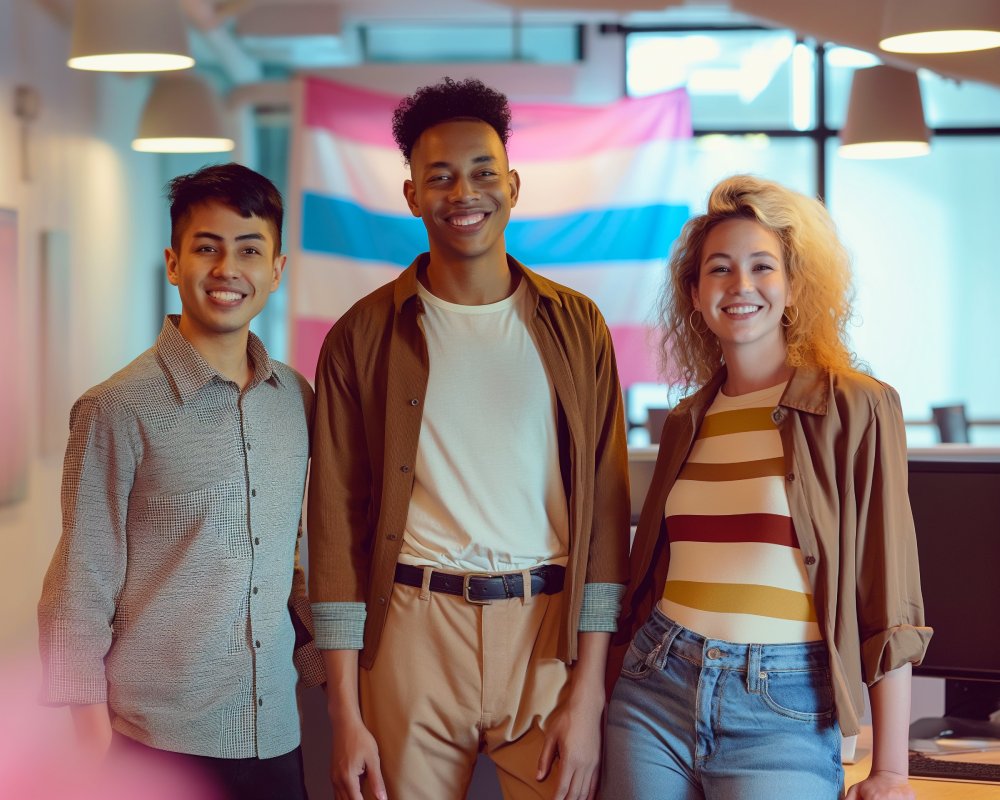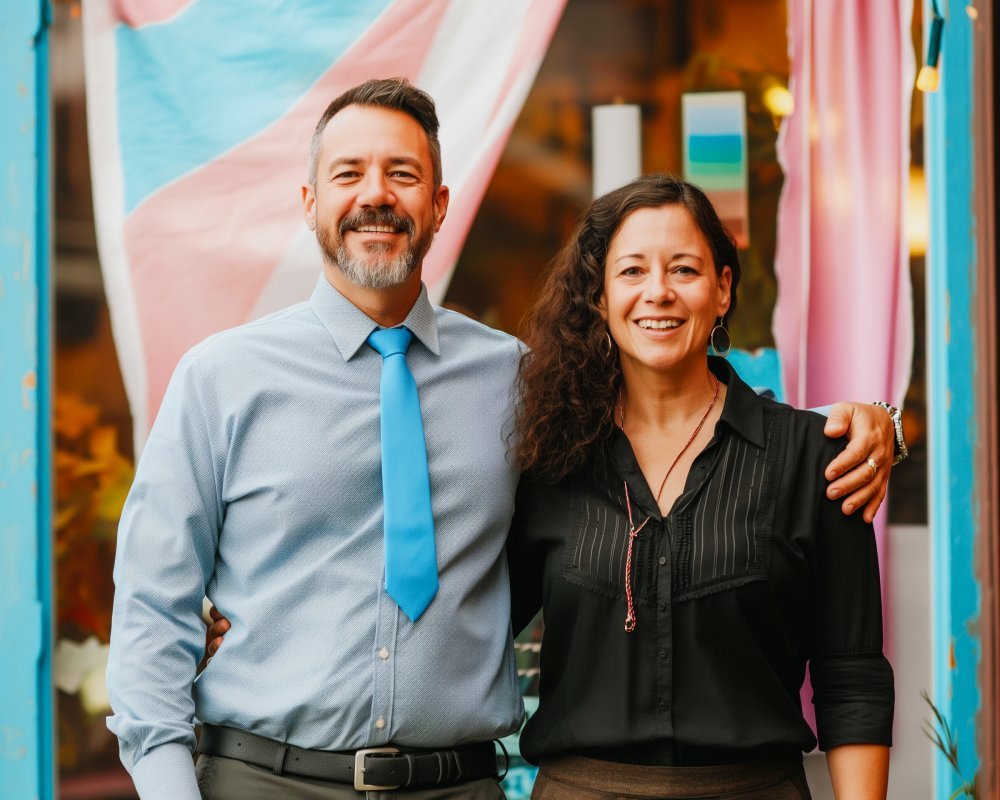
Exploring Transgender People: Insights into Gender Identity and Expression
In recent years, the visibility of transgender people has increased significantly, leading to more widespread discussions about gender identity and expression. However, there remains a great deal of confusion and misunderstanding about what it means to be transgender. This blog post aims to provide a comprehensive exploration of transgender people, offering insights into gender identity and expression, and addressing some of the most common questions and misconceptions.
Understanding the Difference Between Sex and Gender
To begin exploring transgender people: insights into gender identity and expression, it’s essential to understand the difference between sex and gender.
Sex refers to the biological attributes that are typically associated with being male or female, such as chromosomes, hormone levels, and reproductive organs. These physical characteristics are used to assign a person’s sex at birth.
Gender, on the other hand, is a social and psychological concept that involves a person’s identity, roles, and behaviors that are considered appropriate for men and women in a given society. Gender is more fluid and can encompass a range of identities beyond just male and female.
Recognizing this distinction is crucial because it highlights that gender is not necessarily tied to biological sex. This understanding is foundational when exploring transgender people: insights into gender identity and expression.

A Historical Perspective: Have Transgender People Always Existed?
Transgender people have existed throughout history and across cultures. Historical records and anthropological studies reveal that many societies recognized and respected individuals who did not conform to traditional gender roles.
In some Native American cultures, for instance, there were people known as Two-Spirit, who embodied both masculine and feminine qualities and were often revered for their unique perspectives. Similarly, in South Asia, hijras have been recognized as a third gender for centuries.
Understanding the historical presence of transgender people helps to contextualize their experiences and challenges the notion that being transgender is a modern phenomenon. This historical perspective is key when exploring transgender people: insights into gender identity and expression.
Advertisement · Scroll to continue
Recommended
The Spectrum of Gender: What Are Some Categories or Types of Transgender People?
When exploring transgender people: insights into gender identity and expression, it is important to recognize the diversity within the transgender community. Transgender is an umbrella term that encompasses various identities, including:
- Transgender Women: Individuals assigned male at birth but who identify and live as women.
- Transgender Men: Individuals assigned female at birth but who identify and live as men.
- Non-Binary: Individuals who do not exclusively identify as male or female. Non-binary people may identify as both, neither, or somewhere along the gender spectrum.
- Genderqueer: Similar to non-binary, genderqueer individuals reject traditional gender distinctions and may express a mix of masculine and feminine traits.
- Genderfluid: People who experience a flexible range of gender expressions and identities that may change over time or depending on the situation.
Understanding these diverse identities is crucial for a comprehensive exploration of transgender people: insights into gender identity and expression.

Understanding the Causes: Why Are Some People Transgender?
The exact causes of why some people are transgender are not fully understood, but research suggests that a combination of biological, genetic, and environmental factors play a role.
Some studies indicate that prenatal hormone levels might influence gender identity. Other research points to genetic variations that could affect how a person experiences their gender. Additionally, societal and familial influences can shape how individuals understand and express their gender identity.
It’s important to approach this question with sensitivity and an open mind. The reasons behind someone’s transgender identity are complex and unique to each individual. Understanding this complexity is essential when exploring transgender people: insights into gender identity and expression.
Prevalence and Visibility: How Prevalent Are Transgender People?
Estimating the prevalence of transgender people is challenging due to varying definitions, social stigma, and differences in survey methodologies. However, studies suggest that a significant number of people identify as transgender.
In the United States, for example, a study by the Williams Institute estimated that approximately 1.4 million adults identify as transgender, representing about 0.6% of the adult population. As societal acceptance grows, more individuals may feel comfortable disclosing their gender identity, potentially leading to higher estimates.
Understanding the prevalence of transgender people is a crucial part of exploring transgender people: insights into gender identity and expression, as it underscores the importance of recognizing and respecting this diverse community.
Gender Identity and Sexual Orientation: What Is the Relationship?
Gender identity and sexual orientation are distinct but interconnected aspects of a person’s identity. Gender identity refers to who you are, while sexual orientation describes who you are attracted to.
For instance, a transgender woman (assigned male at birth but identifies as female) can be attracted to men, women, both, or neither. Similarly, a transgender man (assigned female at birth but identifies as male) can have any sexual orientation.
Understanding this distinction is vital for exploring transgender people: insights into gender identity and expression, as it clarifies that being transgender is about gender identity, not sexual orientation.
Self-Discovery: How Does Someone Know That They Are Transgender?
The realization of being transgender can occur at any age and can be a gradual or sudden process. Many transgender people report feeling a sense of difference from an early age, often feeling discomfort or disconnection with their assigned sex.
This internal understanding might be accompanied by a desire to express their gender in ways that differ from societal expectations. For some, this realization may come later in life, after years of introspection and self-discovery.
Recognizing the varied journeys of self-discovery is an important aspect of exploring transgender people: insights into gender identity and expression.
Supporting Transgender Youth: What Should Parents Do If Their Child Appears to Be Transgender or Gender Nonconforming?
If a child expresses a transgender or gender nonconforming identity, it is crucial for parents to provide support and understanding. Here are some steps parents can take:
- Listen and Validate: Pay attention to your child’s feelings and experiences. Validate their emotions and let them know that you are there to support them.
- Educate Yourself: Learn about gender identity and the experiences of transgender people. This knowledge can help you provide informed support.
- Seek Professional Guidance: Consider consulting with a mental health professional who has experience with transgender youth. They can offer guidance and support for both you and your child.
- Create a Safe Environment: Ensure that your child feels safe and accepted at home and in other settings, such as school and extracurricular activities.
Supporting transgender youth is a crucial part of exploring transgender people: insights into gender identity and expression, as early acceptance and support can significantly improve their well-being and mental health.

Advertisement · Scroll to continue
Recommended
The Transition Process: How Do Transgender Individuals Make a Gender Transition?
Transitioning is a deeply personal process that can involve several steps, depending on the individual’s needs and desires. These steps can be categorized into social, medical, and legal transitions.
Social Transition: This involves changes in a person’s social life, such as adopting a new name, using different pronouns, and changing clothing and hairstyles to match their gender identity.
Medical Transition: Medical interventions can include hormone replacement therapy (HRT) and various surgeries (such as chest or genital surgeries) to align the body with the person’s gender identity.
Legal Transition: This involves changing legal documents, such as driver’s licenses, birth certificates, and passports, to reflect the individual’s gender identity.
Each person’s transition process is unique, and not all transgender individuals will choose to undergo medical or legal changes. Understanding this diversity is essential when exploring transgender people: insights into gender identity and expression.
Mental Health: Is Being Transgender a Mental Disorder?
Being transgender is not a mental disorder. However, transgender individuals can experience significant mental health challenges due to societal stigma, discrimination, and the stress associated with gender dysphoria.
Gender dysphoria is a recognized medical condition that involves distress related to a mismatch between one’s gender identity and assigned sex at birth. Treatment for gender dysphoria typically involves affirming a person’s gender identity through social, medical, or psychological support.
Understanding that being transgender is not a mental disorder is a crucial part of exploring transgender people: insights into gender identity and expression, as it helps to combat harmful misconceptions and promotes acceptance.
Facing Discrimination: What Kinds of Discrimination Do Transgender People Face?
Transgender individuals often face significant discrimination and challenges in various areas of life. Some common forms of discrimination include:
Employment: Transgender people may experience discrimination in hiring, promotions, and workplace treatment. They are at higher risk of unemployment and underemployment.
Healthcare: Access to appropriate healthcare can be challenging, with transgender people facing discrimination from healthcare providers and difficulty obtaining insurance coverage for gender-affirming treatments.
Legal Protections: In many places, transgender individuals lack adequate legal protections against discrimination, impacting their ability to live safely and authentically.
Violence and Harassment: Transgender people, particularly transgender women of color, face high rates of violence and harassment in public spaces, at work, and even within their own families.
Recognizing these challenges is essential when exploring transgender people: insights into gender identity and expression, as it underscores the importance of advocating for equal rights and protections.
Being a Supportive Ally: How Can I Support Transgender Family Members, Friends, or Significant Others?
Supporting transgender individuals involves several key actions:
Educate Yourself: Learn about transgender issues, terminology, and the challenges faced by transgender people. This knowledge can help you provide informed support.
Use Correct Pronouns and Names: Respect and use the names and pronouns that transgender individuals choose for themselves. This simple act of respect can significantly impact their well-being.
Advocate for Rights: Support policies and laws that protect the rights of transgender people. This includes advocating for anti-discrimination laws, healthcare access, and legal recognition of gender identity.
Listen and Validate: Listen to transgender people’s experiences and validate their feelings. Providing emotional support and being a trusted ally can have a profound impact on their well-being.
Create Inclusive Spaces: Foster environments that are inclusive and respectful of transgender people. This can involve using inclusive language, providing gender-neutral restrooms, and ensuring that transgender individuals feel safe and valued.
Being a supportive ally is a crucial part of exploring transgender people: insights into gender identity and expression, as it promotes acceptance and equality for all individuals.

Positive Developments and Future Directions
Despite the challenges, there have been significant strides in the visibility and acceptance of transgender people. Exploring transgender people: insights into gender identity and expression involves acknowledging these positive developments and the work that still needs to be done.
Increased Visibility: Transgender individuals are becoming more visible in media, politics, and public life. This visibility helps to humanize transgender experiences and combat stereotypes.
Legal Advances: Many countries and states have implemented laws that protect transgender people from discrimination. These legal protections are crucial for ensuring the rights and dignity of transgender individuals.
Medical Recognition: The medical community is increasingly recognizing the importance of gender-affirming care. This includes developing guidelines for the treatment of transgender patients and improving access to necessary medical services.
Cultural Shifts: Society is gradually becoming more accepting of diverse gender identities. This cultural shift is reflected in changes in language, increased support for transgender rights, and the growing inclusion of transgender voices in public discourse.
Conclusion – Exploring Transgender People: Insights into Gender Identity and Expression
In conclusion, exploring transgender people: insights into gender identity and expression is vital for fostering a more inclusive and respectful society. By defining key terms, distinguishing gender identity from sexual orientation, recognizing the challenges faced by transgender individuals, and promoting allyship and support, we can create a world where everyone is free to live authentically.
The journey toward full acceptance and understanding of transgender people, gender identity, and gender expression is ongoing. It requires continuous education, advocacy, and empathy. By embracing diversity and championing the rights of transgender individuals, we contribute to a more just and compassionate world for all.
Through this comprehensive exploration, we hope to have provided clarity on exploring transgender people: insights into gender identity and expression, and to have encouraged a more inclusive perspective.
Advertisement · Scroll to continue

More Recommended
Mykonos Gay Travel Guide: Where to Stay & Party
Mykonos Gay Travel Guide: Where to Stay & Party – Welcome to Gay Thrive’s comprehensive [...]
Best Gay-Friendly Cities in Asia for Travelers
Best Gay-Friendly Cities in Asia for Travelers – The continent of Asia is a diverse [...]
Are Most Men Naturally Bisexual?
Are Most Men Naturally Bisexual? Understanding Male Sexual Fluidity The question, “Are most men naturally [...]
LGBTQ+ Affirming Therapists in Salt Lake City, UT
LGBTQ+ Affirming Therapists in Salt Lake City, UT When it comes to mental health and [...]
Why Pride Month Advertising is Important for LGBTQ+ Brand Visibility
Why Pride Month Advertising is Important for LGBTQ+ Brand Visibility – In today’s world, marketing [...]
How I Know You’re Gay Jokes: Funny “You’re Gay” Moments
How I Know You’re Gay Jokes: Funny “You’re Gay” Moments – Welcome to the most [...]
Why Is Mental Health Awareness Important for Gays?
Why Is Mental Health Awareness Important for Gays? – The LGBTQ+ community, which includes Gay, [...]
The Role of Gay Advocacy Groups in Policy Change
The Role of Gay Advocacy Groups in Policy Change Advocacy groups have long been at [...]
How to Position Your Gay-Owned Business in a Competitive Market
How to Position Your Gay-Owned Business in a Competitive Market – In today’s competitive market, [...]